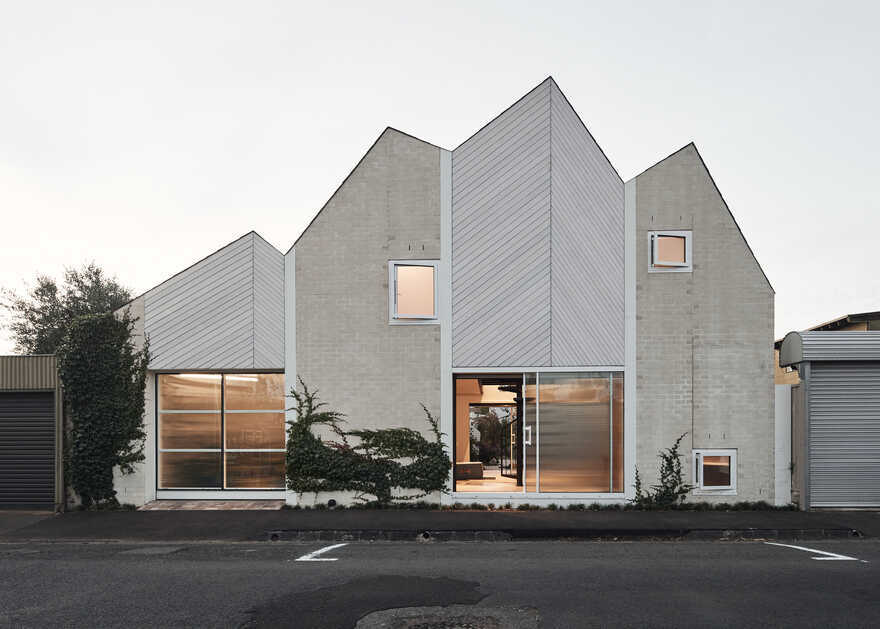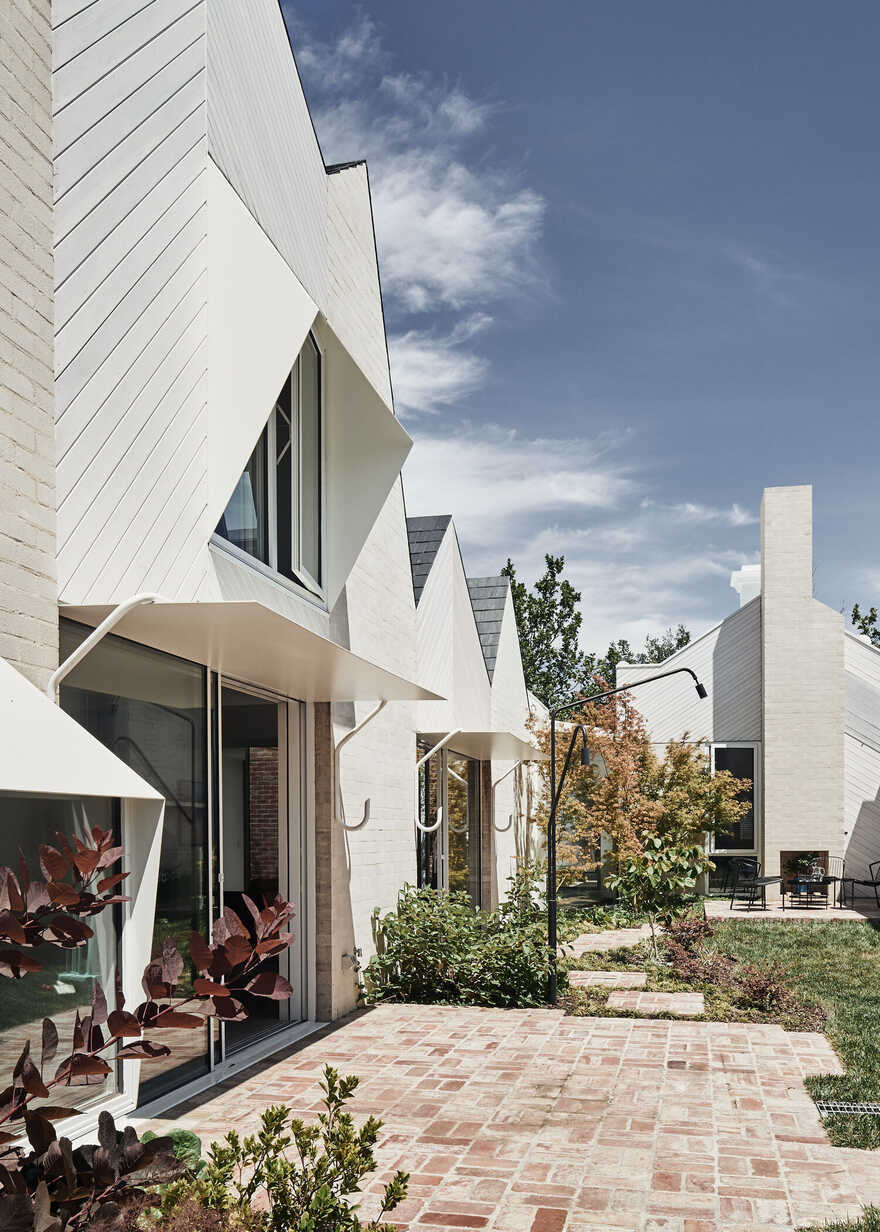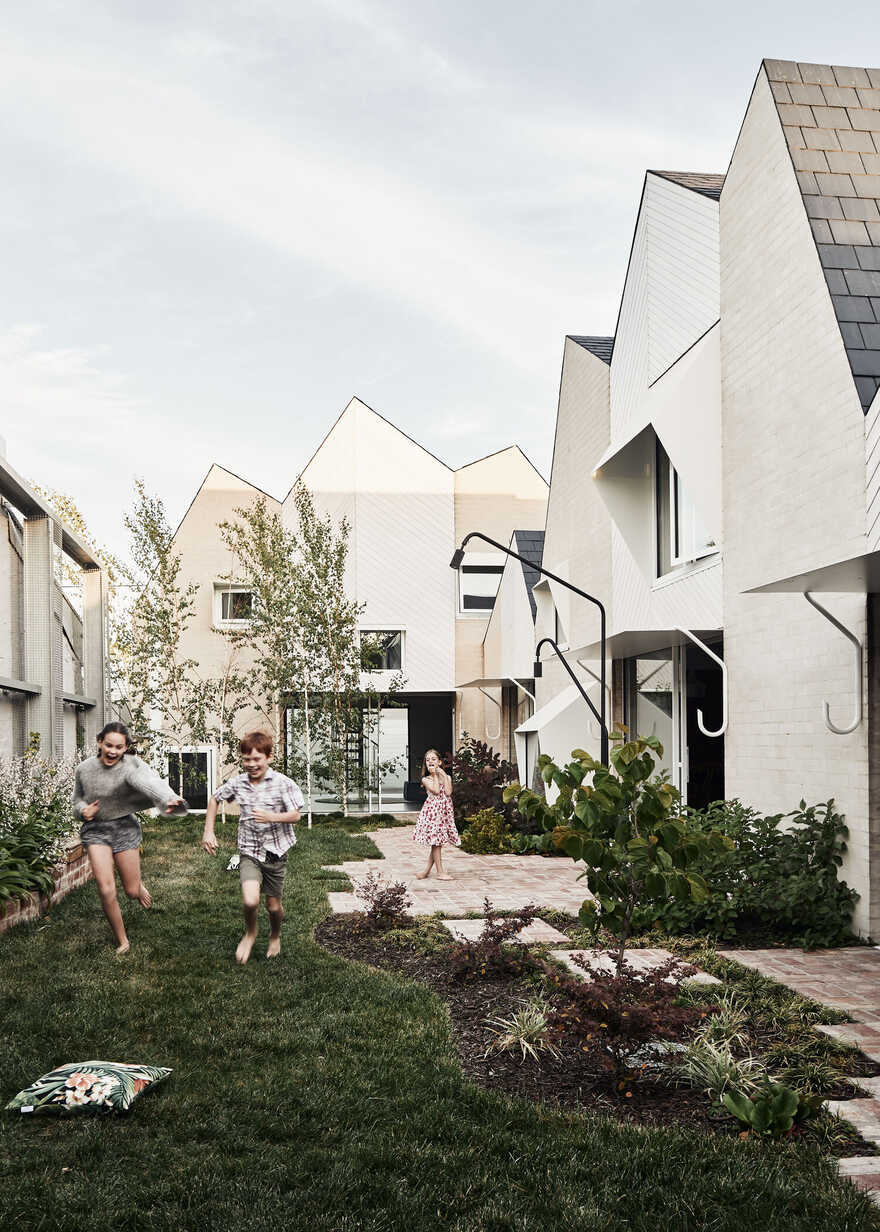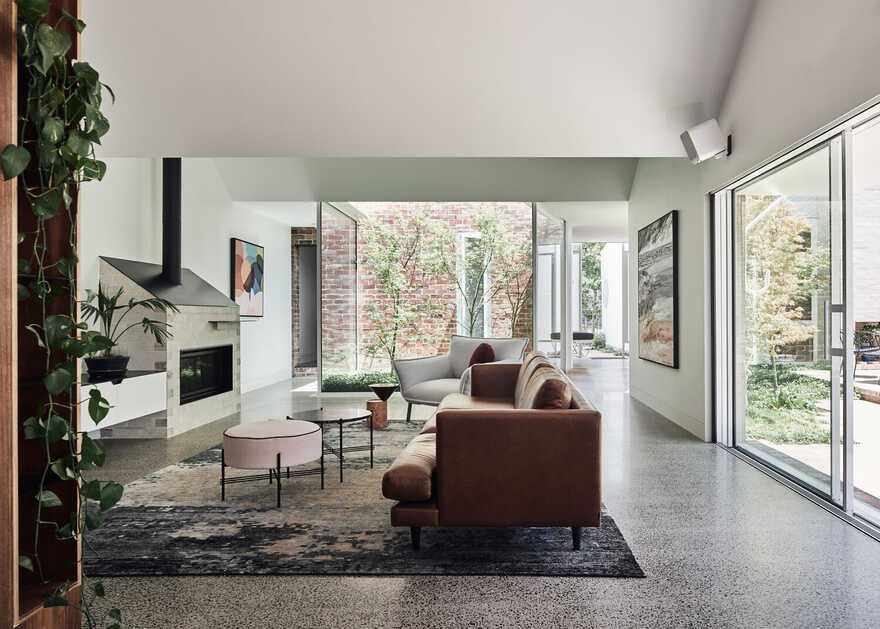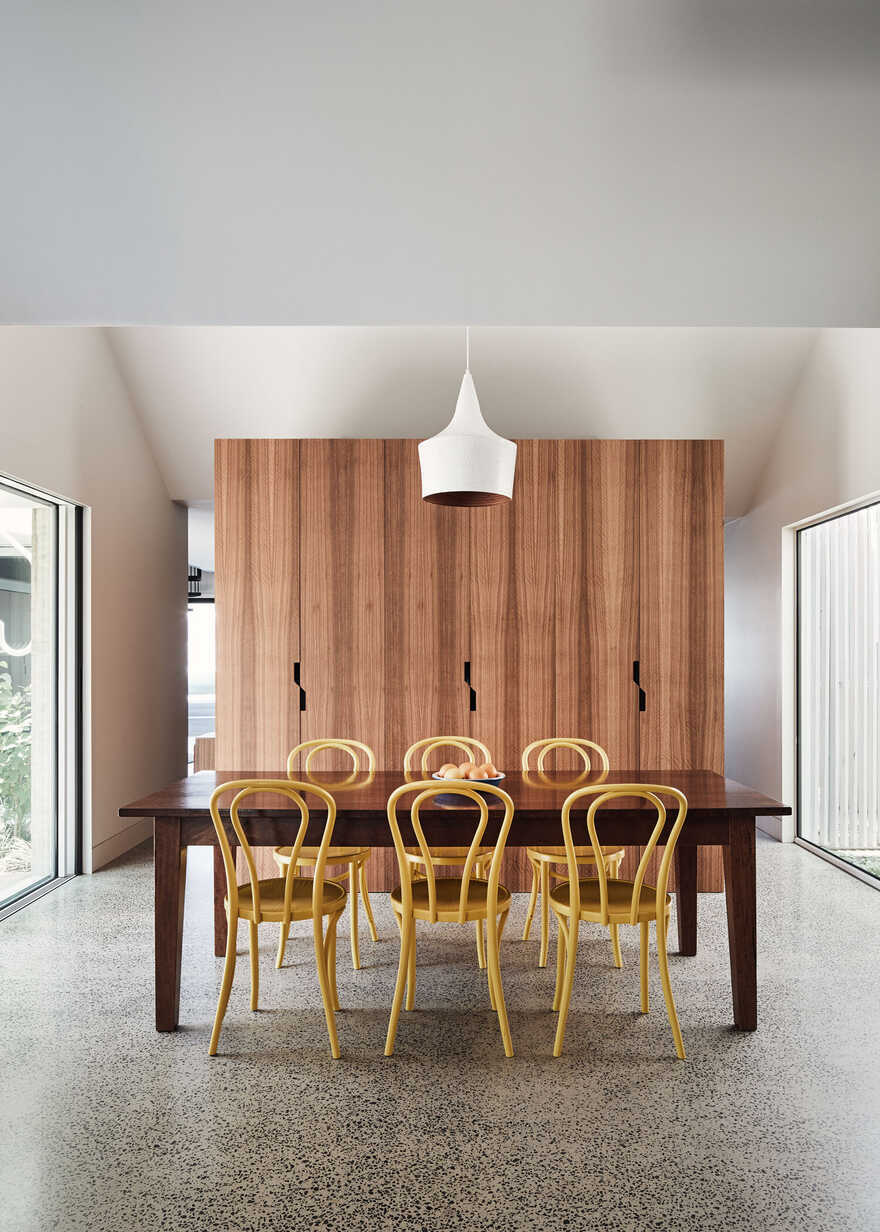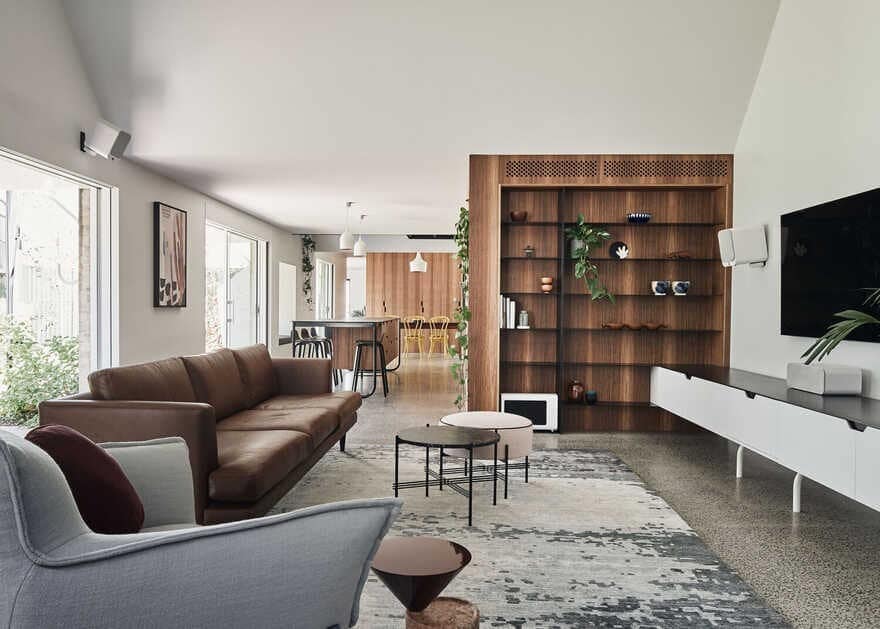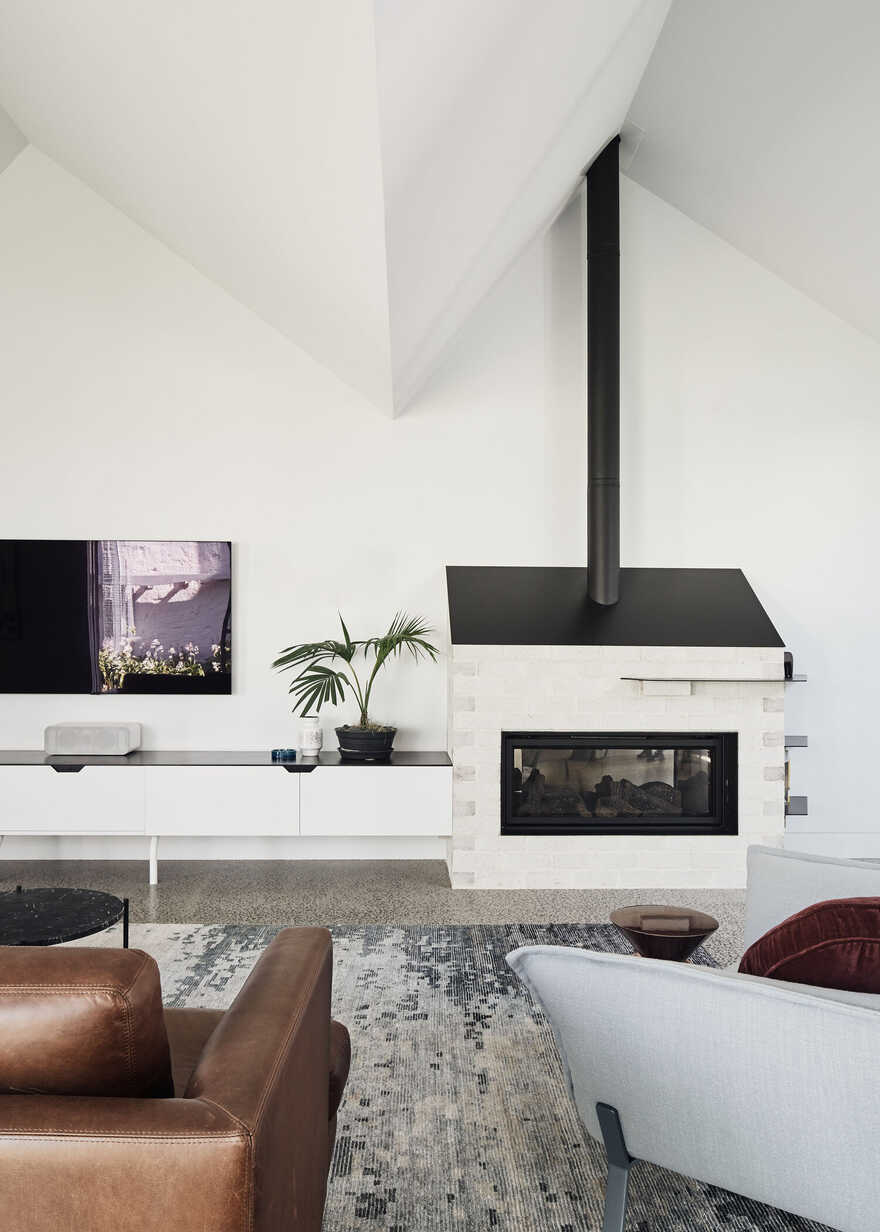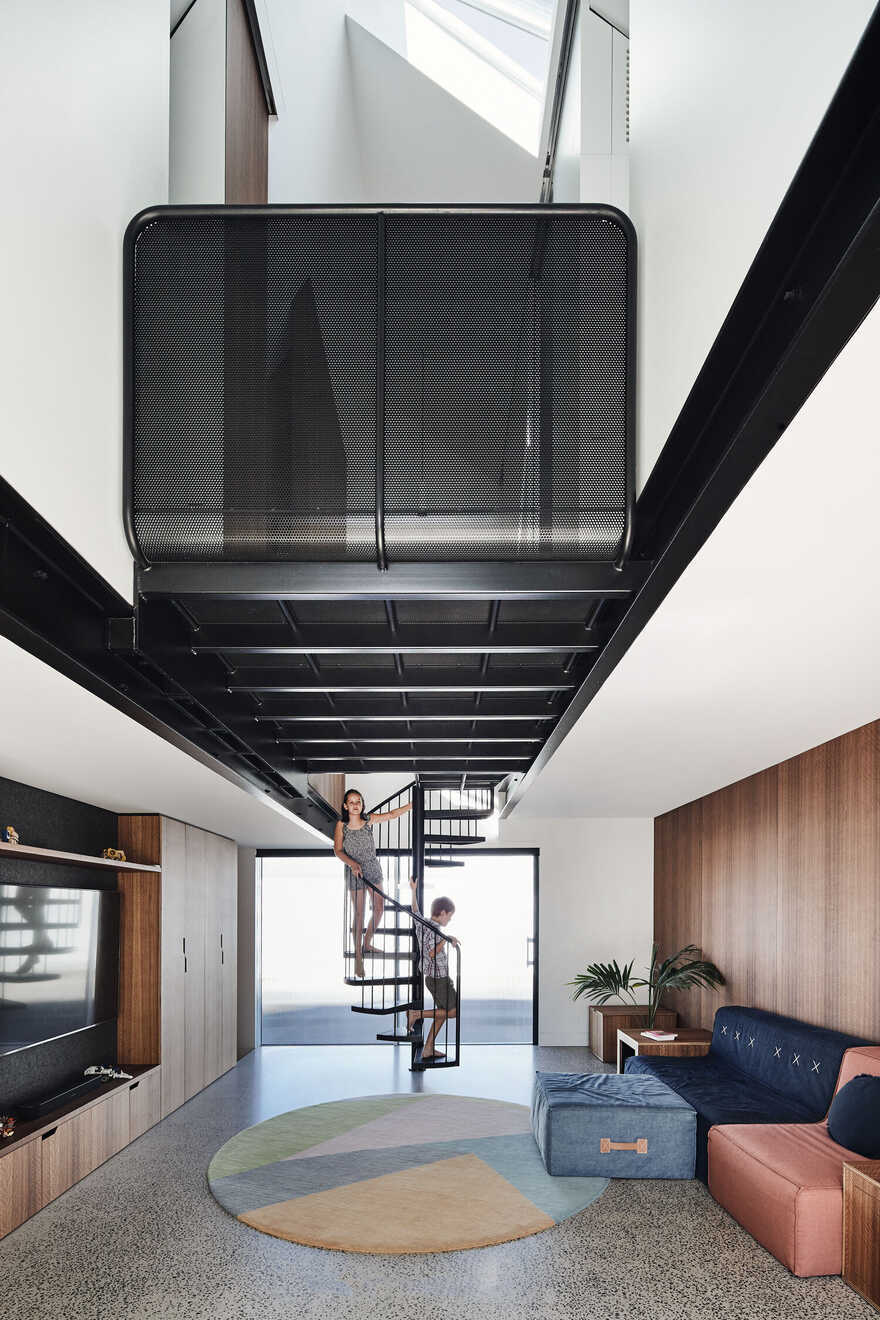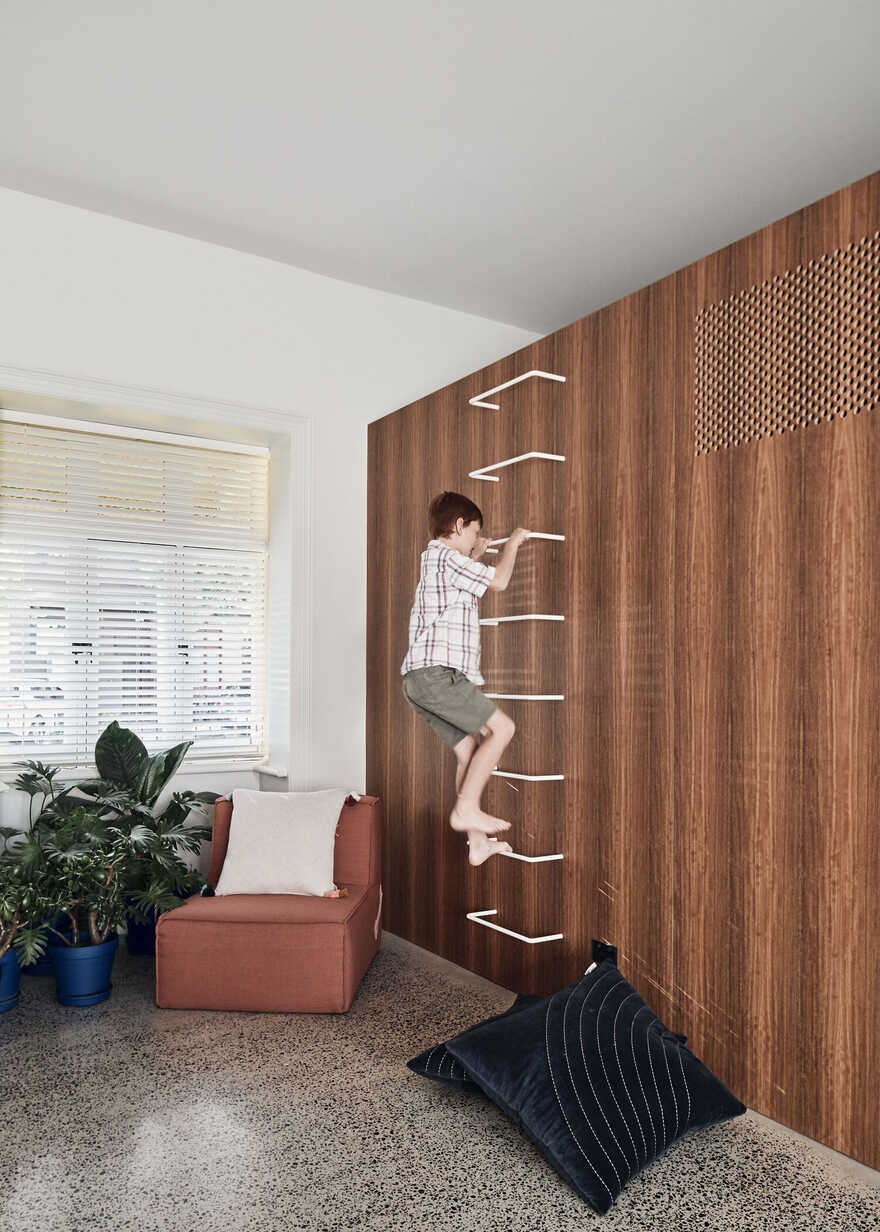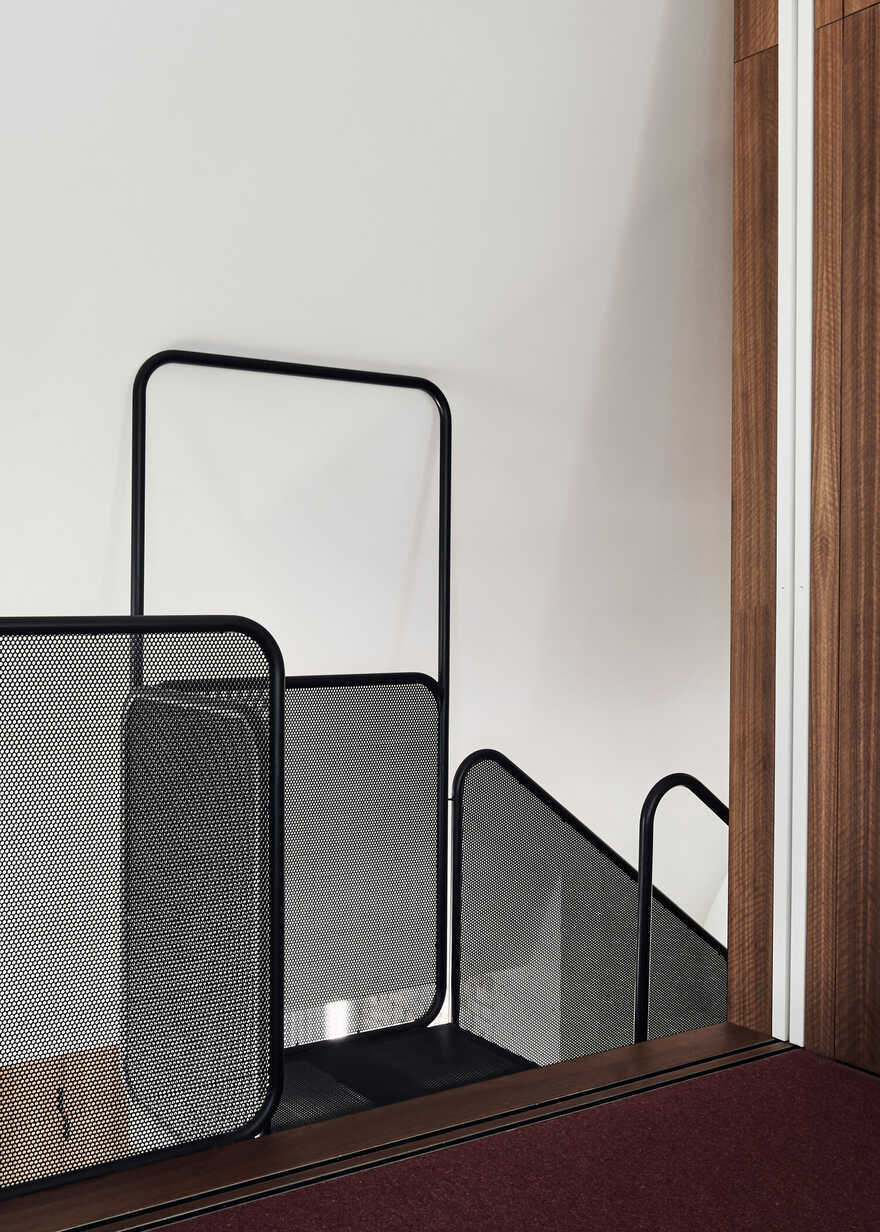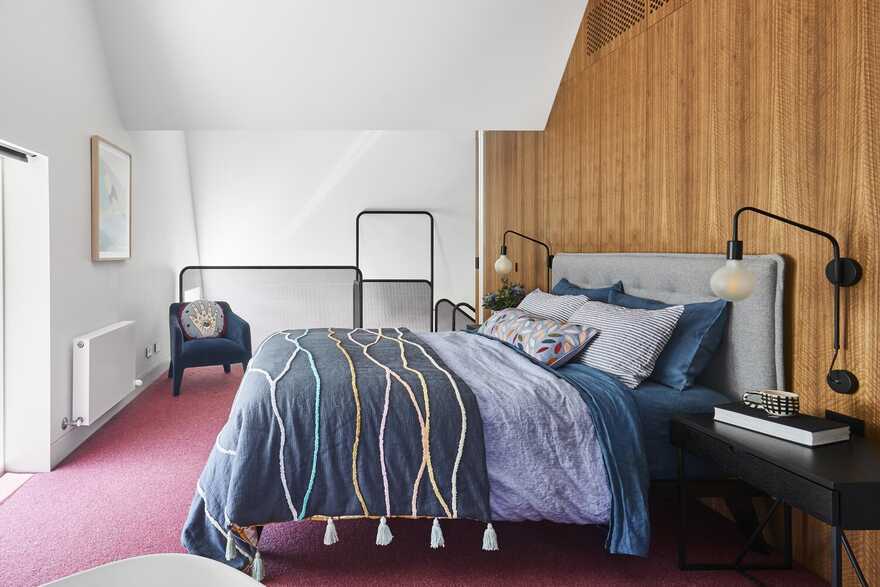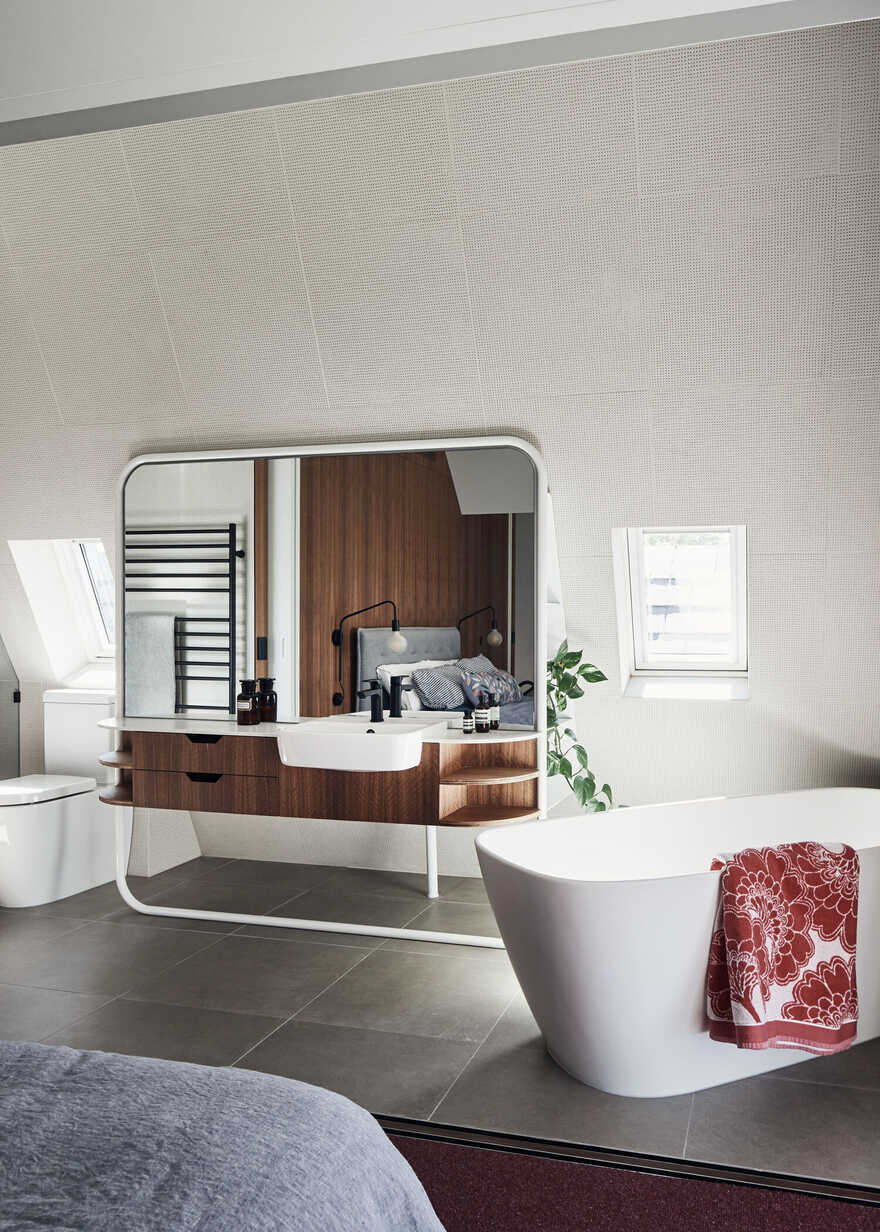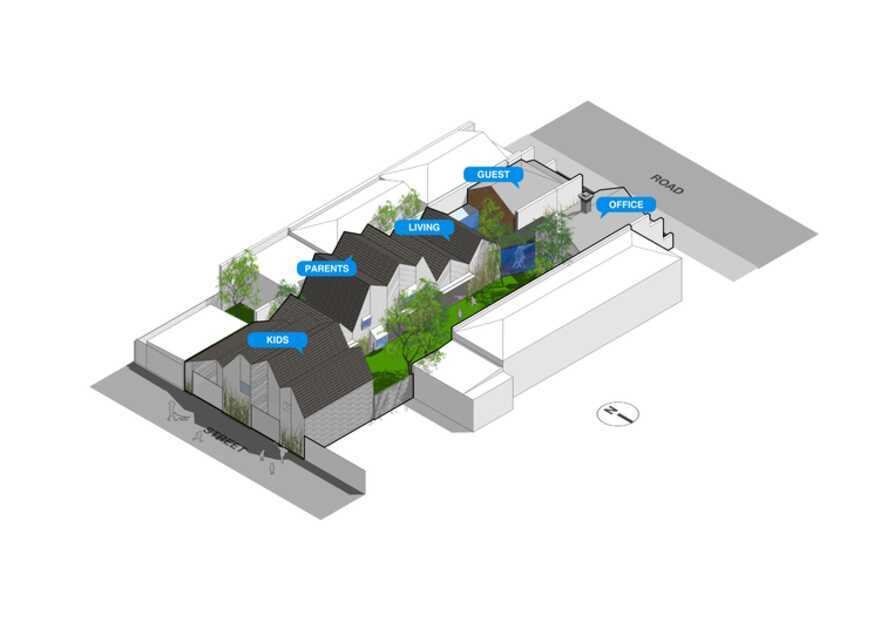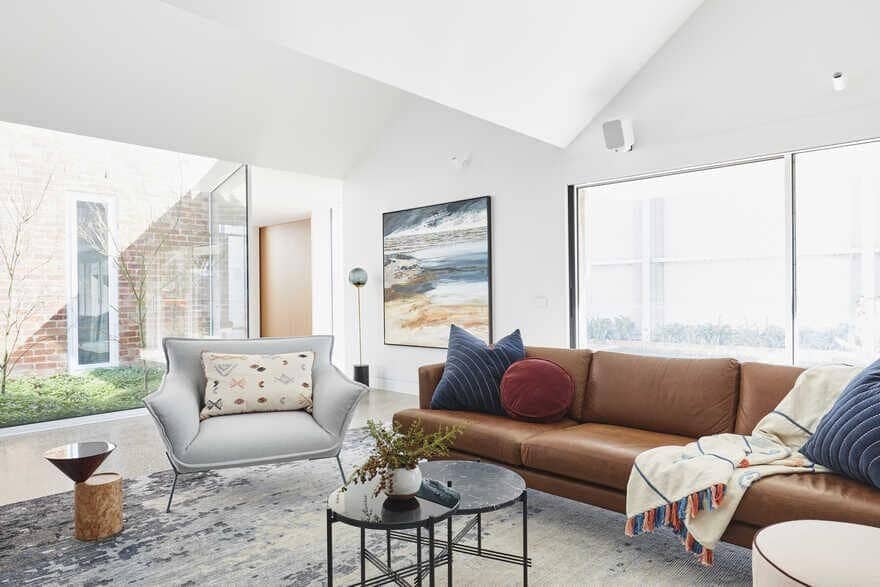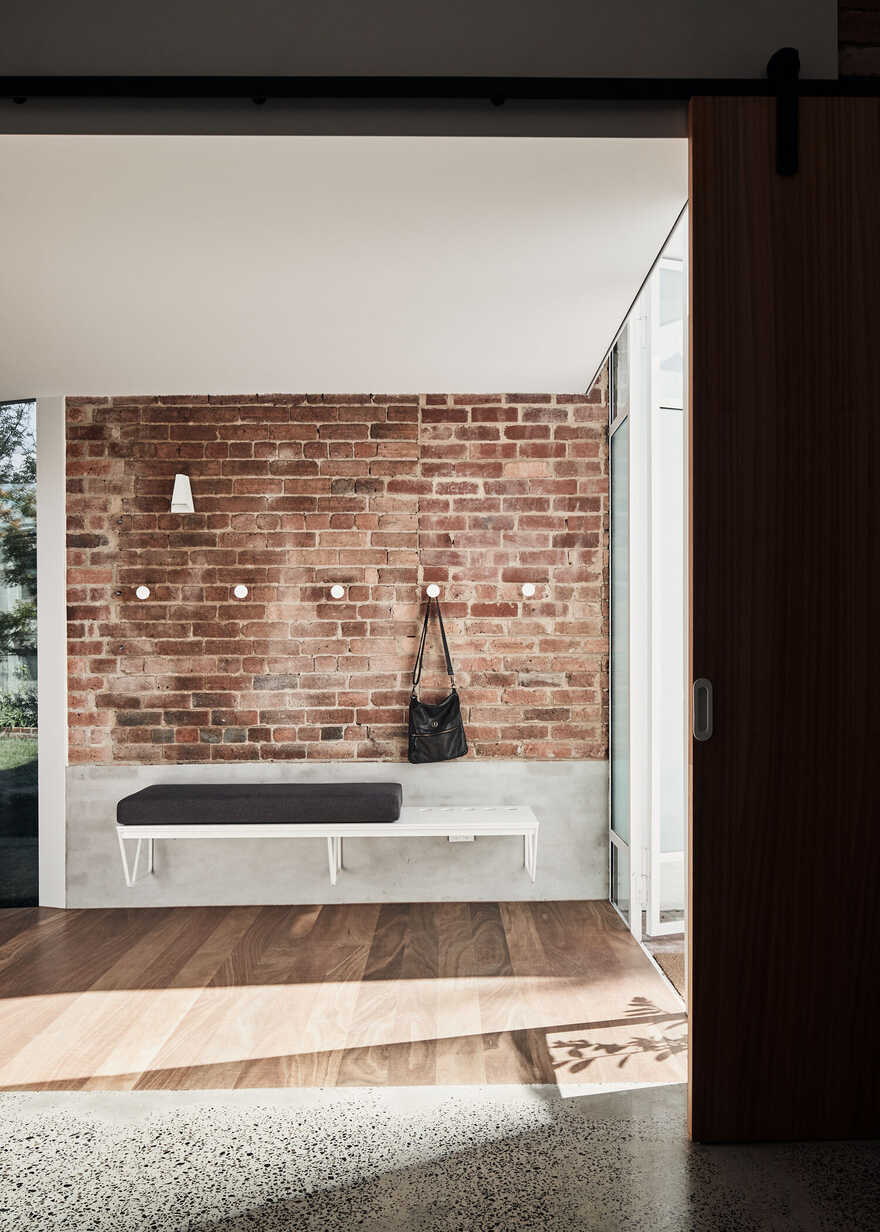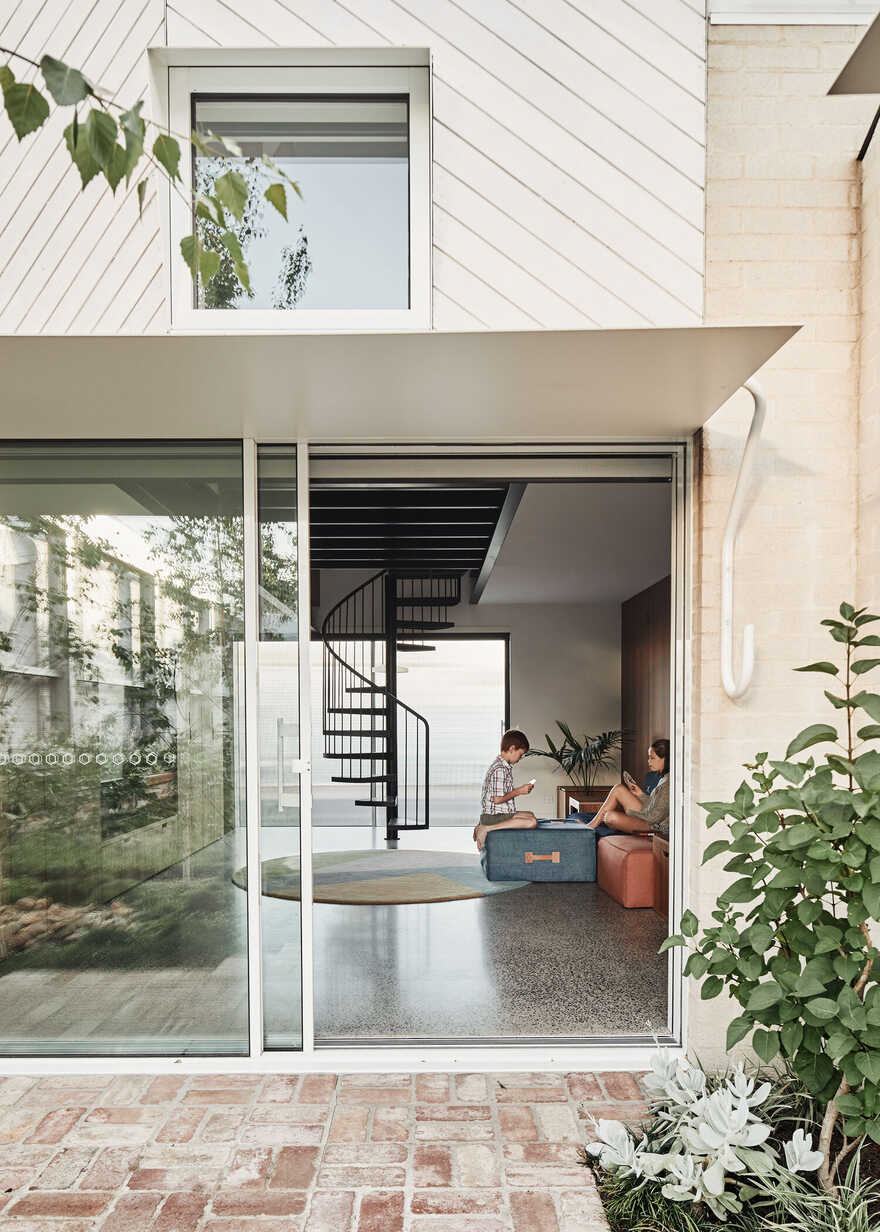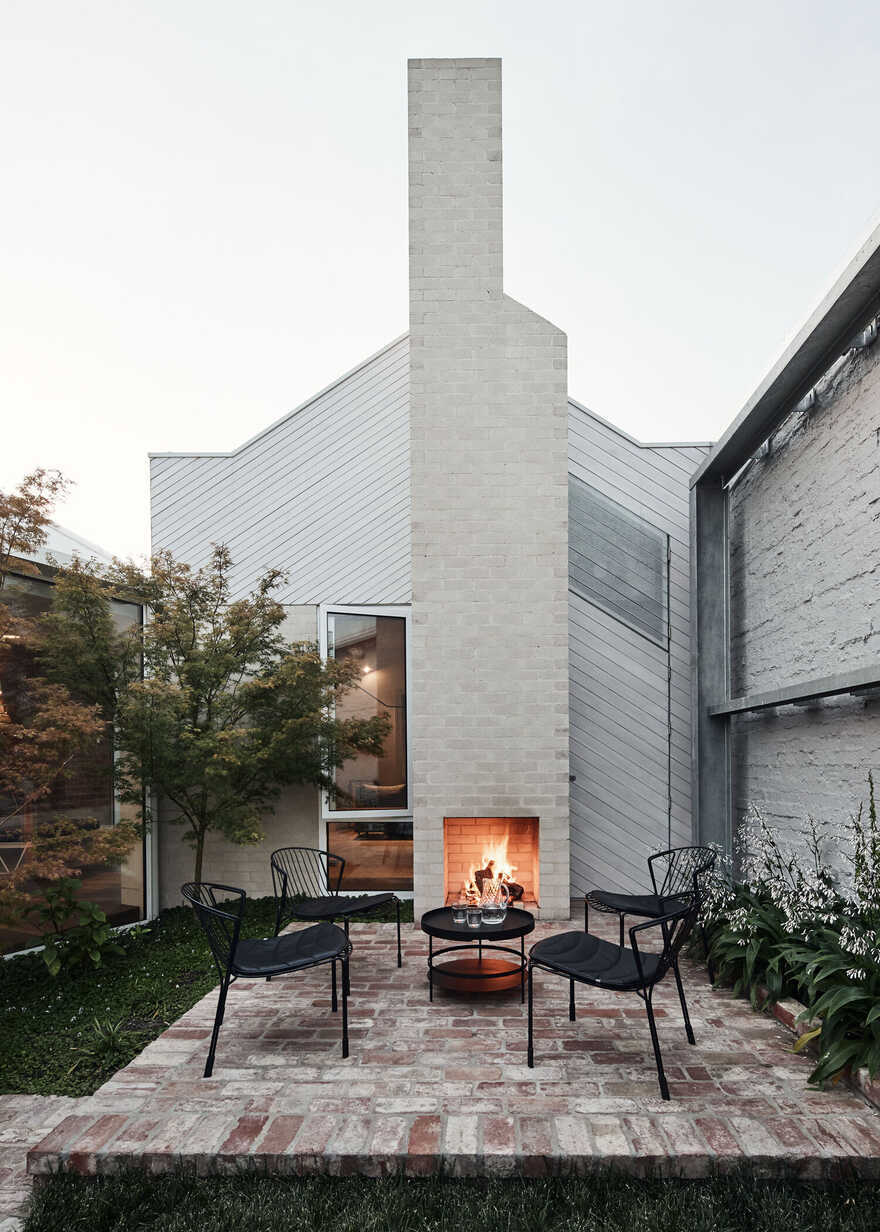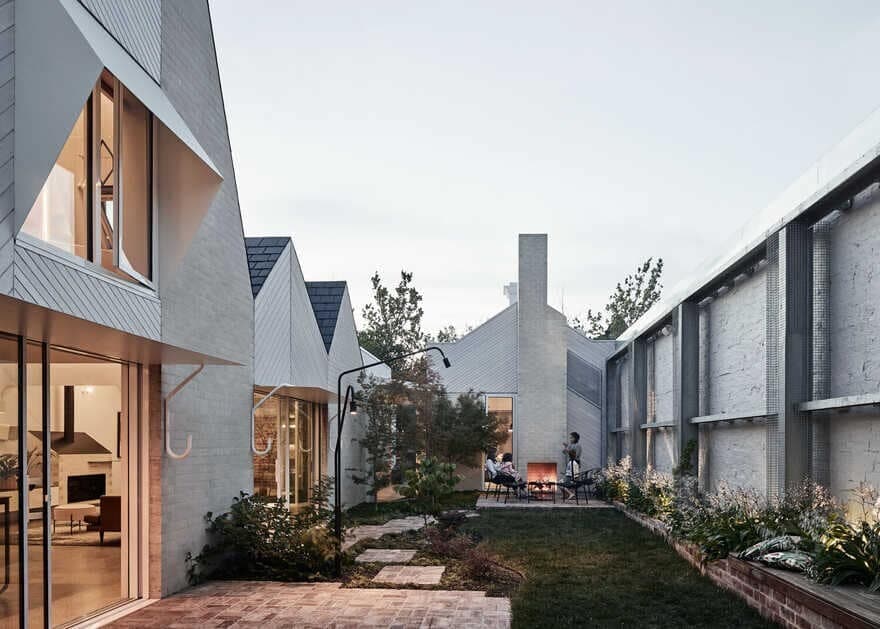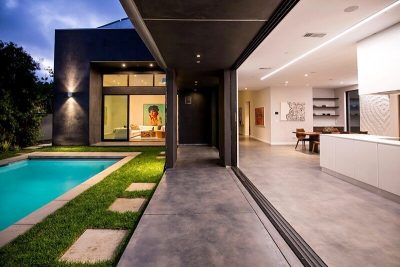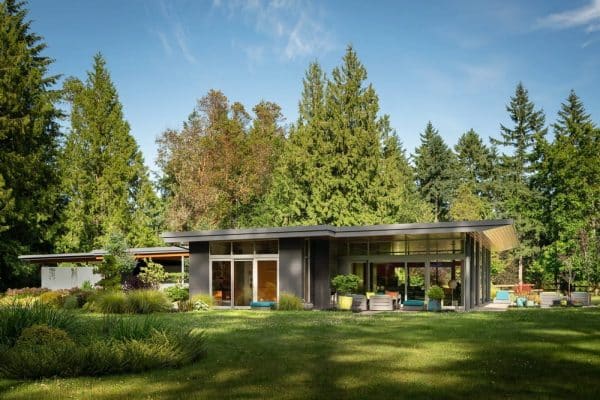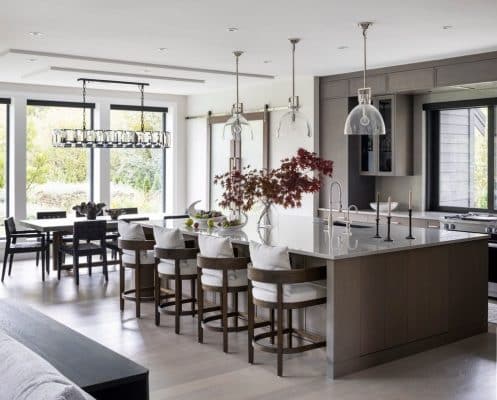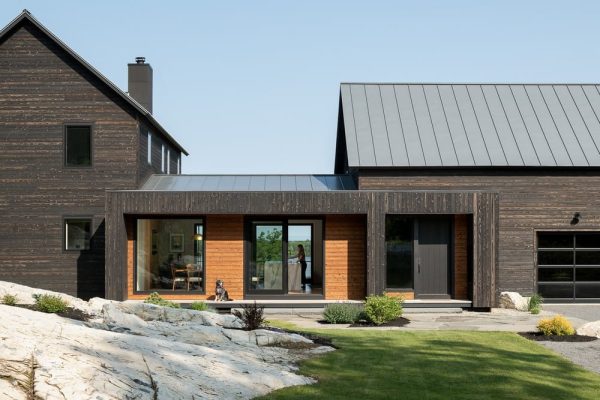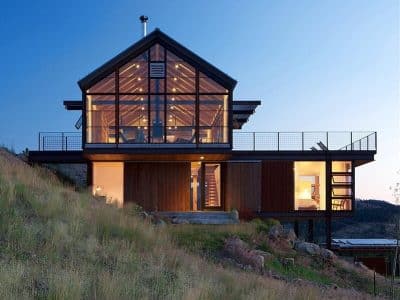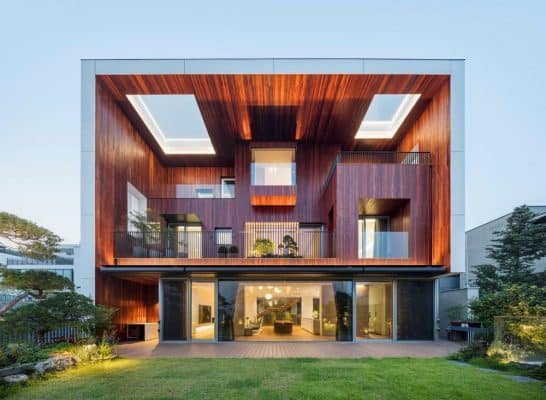Project: RaeRae House
Architects: Austin Maynard Architects
Project Team: Andrew Maynard, Mark Austin, Mark Strahan, Kathryne Houchin
Builder: Overend Constructions
Engineer: Co-Struct
Landscape: Elarc P/L
Interior Styling: Augie Interiors
Location: Melbourne, Australia
Area: 371 m2
Year 2020
Photography: Peter Bennetts, Stephanie Rooney
“We consider ourselves really lucky. Lucky that the property next door to our house came on the market, lucky to be in a position to buy it, and give ourselves the opportunity to build a home for our family of 5. But the biggest stroke of luck was meeting Andrew and Mark and the Austin Maynard Team. We wanted to capitalise on our luck by building a home for life, for us and our family….something that will be fun for our young kids today and equally fun for them in the future. We are so delighted with the amazing house that AMA designed for us. Their care for our needs and wants during the design phase and attention to detail during build has resulted in a house where we really wouldn’t change a thing.” – Fiona and Tim, owners RaeRae house.
Unconventional but thoroughly logical. Like a German sports car, the beauty of RaeRae’s exterior belies the highly tuned rationalism that generated it. Responsive, contextual and strategic, this is a functional home with nuanced moments of surprise and discovery.
THE WHAT
RaeRae house is a new five-bedroom family home which incorporates the front of two pre-existing terrace homes. A glazed entry, set back between the heritage buildings, unites the two and forms the gateway to the new build, surprising in light and scale. The entry leads from front garden to reveal more greenery, through to a lounge, kitchen and dining room. Above the kitchen is the parent’s bedroom, with walk in robe and ensuite. Beyond the dining room and concealed laundry room, is the two-storey kids-zone, with three bedrooms and a bathroom accessed via a spiral staircase. Below is a rumpus room, a study and a multifunctional utility/garage space. The front room of one the existing terrace houses is now a self-contained guest suite, including separate entrance via the original front door. The other terrace is now a home-office and, located behind the other front door, a garden shed which leads directly through to the central garden.
THE BRIEF
The owners of RaeRae were preparing to renovate and extend their tired single-fronted terrace in North Fitzroy, Melbourne, when the house next door came up for sale. The two terraces are each sited on long blocks with dual frontage potential, a street at the front and an unusually wide lane at the rear. The newly purchased home showed signs of a previous life but was dilapidated and unliveable. Walls were covered in George Michael and Pat Cash posters and floorboards squatters had pulled up and burnt in the fireplace. Structurally unsound, this home needed to be demolished, however a heritage overlay dictated that the street frontages of both homes must remain. Austin Maynard Architects were asked to combine the neighbouring properties to create a family home and garden for a family of five.
THE WHY
Whilst first appearances may suggest otherwise, logic, reason and rationality are the cornerstones behind the design of RaeRae house. Initially it looks to be a fanciful design, an architectural mountain range, but at its core the house is responsive and strategic. The roof form is contextual, every rise and fall is tuned to minimise overshadowing and visual bulk, only truly apparent if it were studied from above. The roof is low against abutting gardens to avoid overshadowing, and high where the neighbours have built against the boundary. In creating height in all the areas, both internally and externally, the mountain profile emerged.
EXTERIOR
The same rational principle applies to the exterior materiality. The considerable weight of brickwork always meets the ground, and is never elevated. Wherever there is an opening, there is timber above, resulting in minimal structural steel, significantly reducing cost while also adding pattern and beauty. It is a strategic way of thinking about structure which ensure budgets are met, yet also leads to a diverse aesthetic. The form is the result of rational design. It’s not decorative. The timber and brick create an aesthetic that is not just fanciful but based on solid pragmatics. Similarly the window locations, externally randomly placed, yet internally undertake specific spatial functions.
The wide laneway at the rear of the block has an emergent aesthetic, lots of garages, but also extensions, subdivisions and newer builds that have capitalised on the dual frontage aspect. Rather than defend from the street, the design opens to this public space. With no heritage constraints to this frontage, the aim was to engage with the street and the neighbours, with direct access, large openings and windows. With the potential change in future transport needs, the garage at RaeRae is a multifunctional space, well designed and fully insulated to allow for future use as a bedroom or airbnb studio.
Though not the tallest building on the block, AMA recognised that the roof form would be clearly visible within the neighbourhood. Rather than adding more clumsily erected metal roofing the natural beauty of slate was chosen. Over time the slate will age and lichen will establish, creating a beautiful canvas beyond its utilitarian function.
DELIBERATELY NUANCED
Austin Maynard Architects work is eclectic not merely due to the abundance of ideas they explore, but more importantly because the team engage with clients to find out what they really like. The master bedroom at RaeRae is an example of this. Instead of the usual request for a parental retreat, a quiet place far away from active family areas, the owners asked for the main bedroom to be at the very centre of the house. Here, located directly above the kitchen, the parents have the opportunity to directly engage with the activity below, or close the large sliding doors to create a private space.
The children also have their own versatile areas. The rumpus room opens out to the garden and also to the street, future-proofed to become self-contained with its own direct street access. Behind is a dedicated craft/study area, designed to allow for both maximum creative mess and quiet secluded revision. A spiral staircase leads up to a bathroom and three bedrooms, with a bright colour carpet chosen by each child. The perforated steel landing connects the bedrooms and bridges a double height void. The three bedrooms feature full height sliding panels, which allow the siblings the option of being private, or to open up and converse with one another across the hallway – both between the bedrooms and from up and downstairs.
The RaeRae house is deliberately nuanced in this way. Every part of the house can be a secluded space, closed off with hidden sliding doors, or opened up to be free flowing. The occupants can be engaged and connected or alone and private. They have both/and, not either/or.
ALL SECRETS, NO LIES
Often highly functional and rational homes are banal, but RaeRae house is Austin Maynard Architects’ attempt at challenging this; to create a rational house filled with secrets and discovery, not for outward show, but for the occupants individual experience and evolving needs. Unconventional but thoroughly logical is the location of the shed and bin storage. Directly behind the old front door, it allows for a wheelbarrow of dirt or firewood to be transported to the garden without going through the house.
In the kitchen there’s a hidden pantry, appliance storage shelves and food preparation area. Slide away the glass splash back to expose the cooking secrets behind. The kitchen bench hovers above the floor, allowing for an abundance of natural light, with cables and wires hidden within tubular ends. The rumpus and craft rooms hide a multitude of secrets – pin-boards, blackboards, sliding doors, recharging zones, cubby holes and toy storage. A ladder in the study leads to extra storage space or a place to hide. Outside, the passive solar awnings that shade the windows are as honest as they are delightfully functional, perfect to hang baskets or lights.
SUSTAINABILITY
RaeRae house was specifically built along the southern boundary to take full advantage of the northern aspect. Living spaces face the sunny northern garden, while storage and services are to the south. Reorienting the home along the southern boundary maximises passive solar gain and ensures a sunny garden with minimal shadow, ideal for Melbourne’s climate. Sustainability is always at the very core of each project. All new work aims to maximise available daylight and optimise passive solar gain in winter, while ensuring that summer sun does not hit the glass. All windows are double-glazed with fixed external awnings to provide shade. With active management of shade and passive ventilation, demands on mechanical heating and cooling are drastically reduced. A large water tank has been buried within the garden. All roof water is captured and reused to flush toilets and water the garden. Where possible Austin Maynard Architects have sourced local trades, materials and fittings. The home is designed to be durable and long lasting. High quality and highly sustainable materials are used throughout. Beyond its obvious aesthetic qualities, slate roofing offers a highly robust surface with a lengthy life span and no maintenance. Most importantly slate is a natural material, simply cut out of the earth and installed, it doesn’t go through a resource and carbon hungry manufacturing process, it’s not full of chemicals and it can be un-nailed and re-used in another life.

